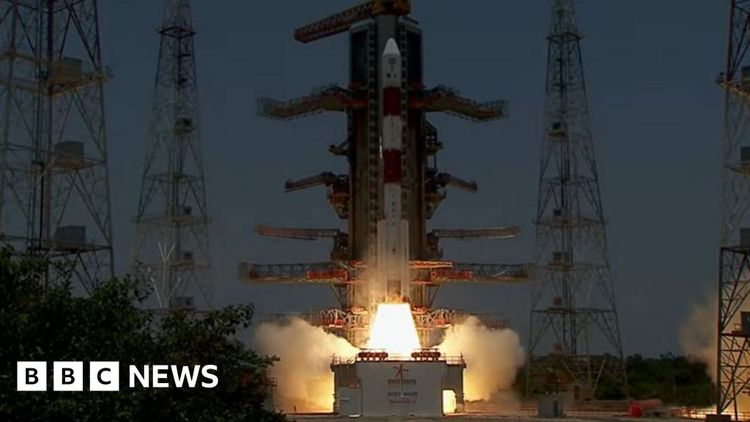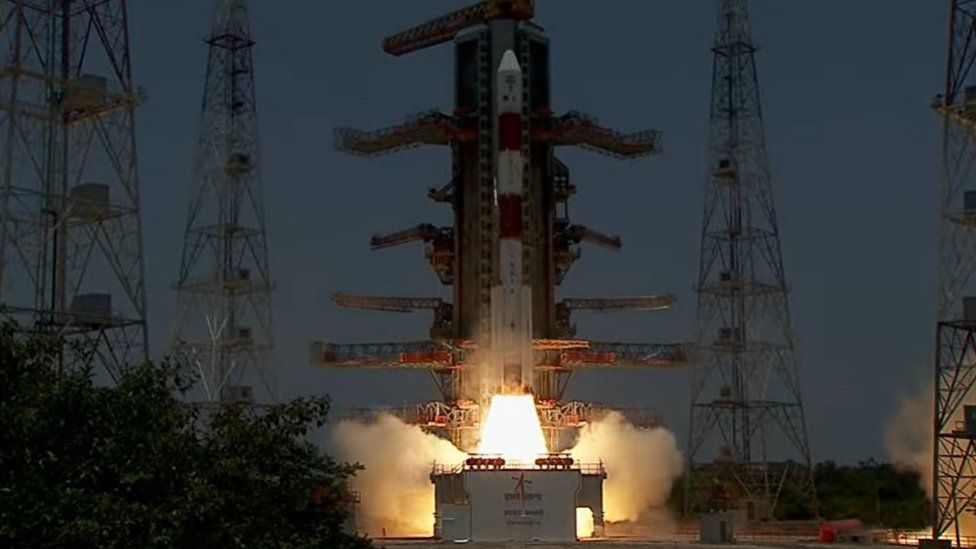Aditya-L1: India successfully launches its first mission to the Sun

India's first-ever Sun expedition took off from the launch site at Sriharikota on a Saturday morning.

India has successfully initiated its inaugural mission to observe the Sun, shortly after achieving a groundbreaking milestone as the first country to successfully land in the vicinity of the Moon's southernmost point.
Aditya-L1 soared into the sky from the Sriharikota launch pad on Saturday at 11:50 in India (06:20 in GMT).
It will journey a vast distance of 1.5 million kilometers (932,000 miles) away from our planet. To put it in perspective, this accounts for merely 1% of the colossal gap separating Earth and the Sun.
According to the Indian space organization, the journey to reach such a distant place will require a time span of four months.
The inaugural space exploration endeavor of India, which aims to examine the largest celestial body within our solar system, has been dubbed Aditya, in honor of Surya. Surya, a significant figure in Hindu mythology, is considered the god of the Sun.
L1 denotes Lagrange point 1, which refers to the precise location between the Sun and Earth that the Indian spacecraft is currently heading towards.
As per the European Space Agency, a Lagrange point refers to a specific location where the gravitational pulls of two massive entities, like the Sun and the Earth, neutralize each other, granting a spacecraft the ability to "float."
After Aditya-L1 reaches this designated location, it will be able to revolve around the Sun at the exact speed as the Earth. Consequently, the satellite will need only a minimal amount of fuel to function.
On the morning of Saturday, numerous individuals congregated in the designated gallery arranged by the Indian Space Research Agency (Isro) close to the takeoff location, to witness the launch.
Additionally, the launch was televised nationwide, with commentators expressing their admiration for its impressive commencement. Isro experts declared that the launch triumphed, highlighting its standard performance.
The spaceship will now make multiple journeys around the planet before being sent off towards L1.
From this advantageous viewpoint, Aditya-L1 will possess the ability to consistently observe the Sun - even when it is obscured during an eclipse - and conduct scientific investigations.
Isro has not disclosed the exact expenses associated with the mission, however, according to articles in the Indian media, it is estimated to be around 3.78 billion rupees ($46 million; £36 million).
Isro announces that the spacecraft contains seven scientific gadgets that will carefully examine and investigate the solar corona (the exterior layer); the photosphere (the visible surface of the Sun or the segment visible from our planet) and the chromosphere (a slender plasma layer positioned amid the photosphere and the corona).
The research will assist scientists in comprehending solar phenomena like solar wind and solar flares, along with their impact on Earth and weather in nearby space, in a timely manner.
Ex-ISRO scientist, Mylswamy Annadurai, asserts that the Earth's weather is continually influenced by the Sun via radiation, heat, the transfer of particles, and magnetic fields. Simultaneously, he states that the Sun's influence extends to the outer space weather as well.
"The functioning of satellites can be influenced by space weather. Solar winds or storms have the potential to impact the electronics present on satellites, and in some cases, even disrupt power grids. However, our understanding of space weather is still incomplete," Mr. Annadurai shared with the BBC.
India boasts a collection of over 50 satellites residing in the vastness of outer space, rendering numerous vital benefits to the nation. These satellites play a pivotal role in establishing communication networks, offering crucial meteorological data, and aiding in forecasting pest invasions, droughts, and imminent calamities. As per the statistics provided by the United Nations Office for Outer Space Affairs (UNOOSA), our planet's orbit is home to a staggering 10,290 satellites, out of which approximately 7,800 are actively functioning.
According to Mr. Annadurai, Aditya will offer us improved comprehension and even provide us with an advanced notice about the celestial body that our existence relies upon.
Being aware of the behaviors of the Sun, like the solar wind or a sudden release of energy, a few days in advance, will enable us to relocate our satellites to a safer position. This action will contribute to extending the lifespan of our satellites while they operate in outer space.
Picture credit, Getty Images
The objective is to enhance our knowledge of the Sun, the ancient star that has been shining for 4.5 billion years.
According to him, the primary objective of this mission is to enhance our comprehension of the Sun, which is a celestial body that has been existing for 4.5 billion years and is responsible for maintaining the cohesion of our solar system.
India's solar endeavor emerges shortly after the nation's triumphant touchdown of the world's inaugural probe in the proximity of the southern region of the moon.
In addition to that, India also accomplished a gentle touchdown on the Moon, making it just the fourth nation globally to achieve this feat. The United States, the former Soviet Union, and China are the only other countries to have achieved a soft landing on the Moon so far.
If Aditya-L1 achieves its goal, India will become part of the exclusive cluster of nations actively researching the Sun.
In 1981, Japan took the lead as the pioneer in sending a mission to investigate solar flares, while both the US space agency Nasa and the European Space Agency (ESA) have been monitoring the activities of the Sun since the 1990s.
In February 2020, Nasa and ESA collaboratively sent off a Solar Orbiter into space. This remarkable spacecraft is conducting a detailed study on the Sun from a close distance, acquiring valuable information which scientists believe will enhance our comprehension of what triggers its energetic and ever-changing nature.
In the year 2021, the latest vehicle from Nasa, known as Parker Solar Probe, achieved a remarkable feat by being the pioneer to navigate through the corona, which is the Sun's outermost layer.
BBC India News can now be found on YouTube. Click on this link to subscribe and enjoy our documentaries, explanations, and special segments.





